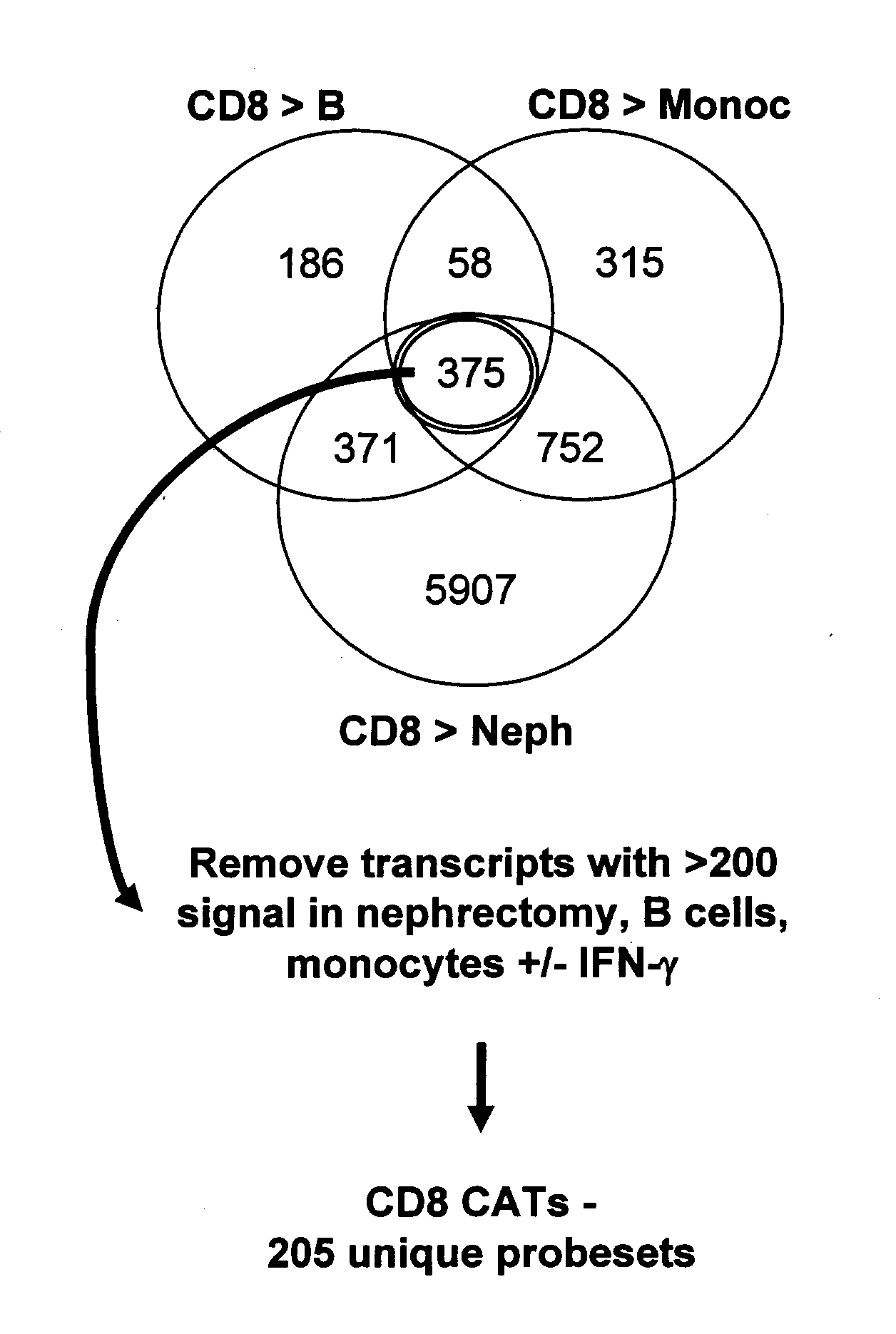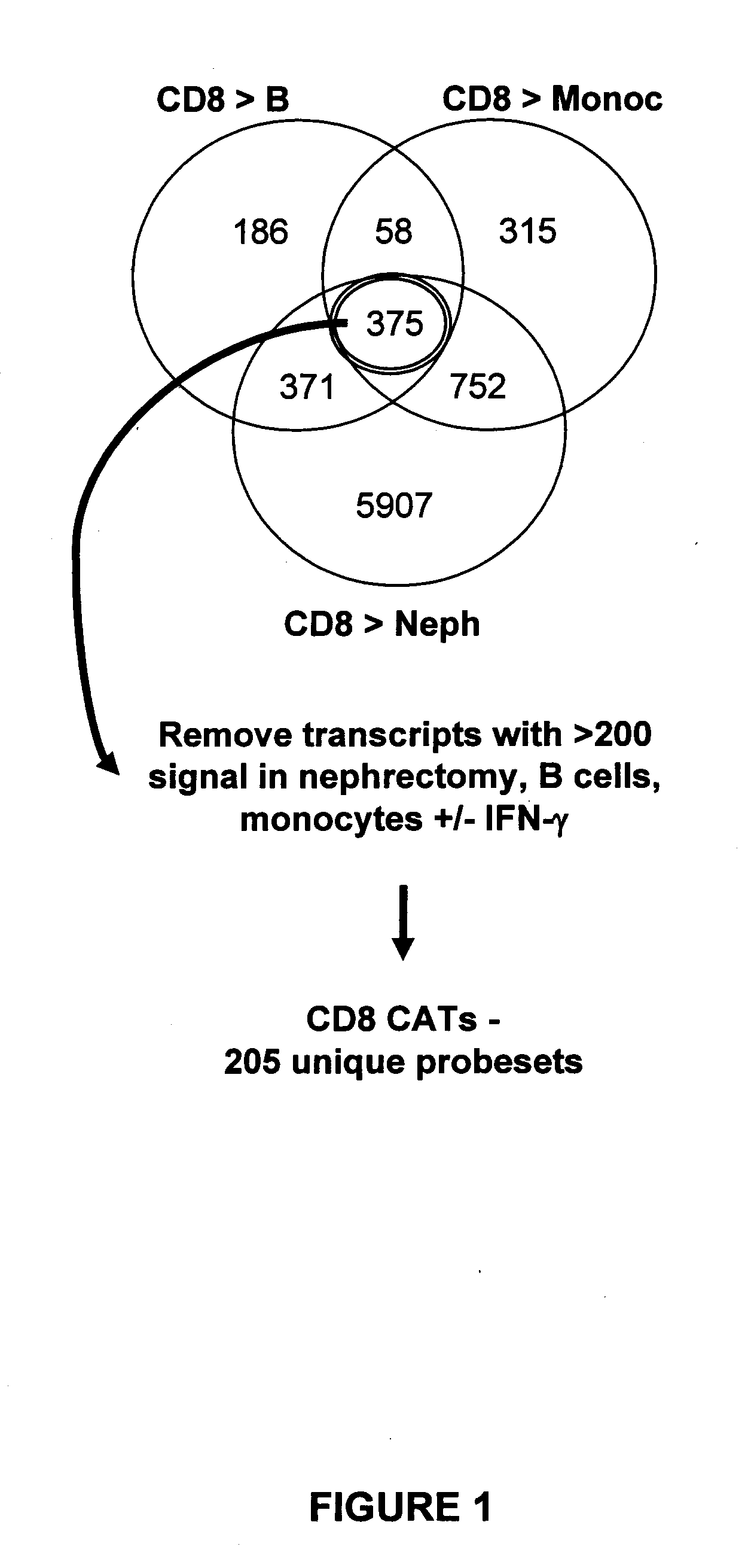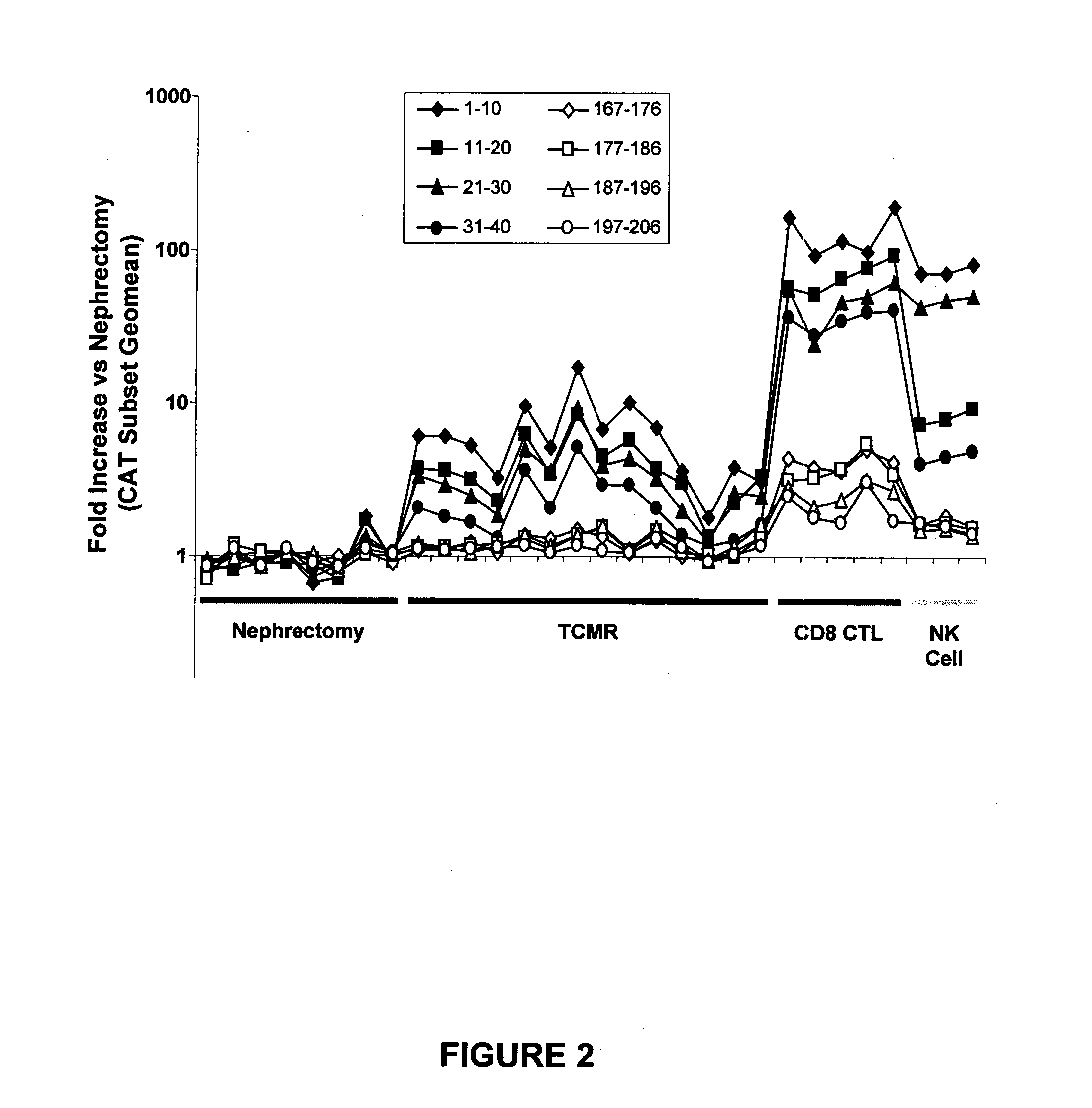Assessing tissue rejection
a tissue and tissue technology, applied in the direction of material testing goods, biochemistry equipment and processes, instruments, etc., can solve the problems of insufficient training of pathologists, inability to produce a picture of active events, and inherent in the diagnosis of pathology of tissue rejection, etc., to achieve the effect of suppressing tissue rejection
- Summary
- Abstract
- Description
- Claims
- Application Information
AI Technical Summary
Benefits of technology
Problems solved by technology
Method used
Image
Examples
example 1
Characterizing Human Cytotoxic T Lymphocyte-Associated Transcripts (CATs)
[0039]Cell cultures: Cell cultures were maintained in complete RPMI (RPMI 1640 supplemented with 10% FBS (Invitrogen Life Technologies, Carlsbad, Calif.), 2 mM L-glutamine, β-mercaptoethanol, non-essential amino acids, sodium pyruvate, and antibiotic-antimycotic solution). The cultures were incubated at 37° C. in the presence of 5% CO2.
[0040]Isolation and generation of cell populations: Whole blood samples were obtained from healthy volunteers. Peripheral blood mononuclear cells (PBMCs) were isolated from the whole blood samples by density gradient centrifugation using Ficoll® (GE Healthcare, Piscataway, N.J.). The PBMCs were used to prepare purified cell populations. Effector CD4 and CD8 cells were generated through several rounds of MLR stimulations. PBMCs were first cultured at a ratio of 1:1 with RPMI8866 cells treated with mitomycin (Sigma, St. Louis, Mo.). The mitomycin-treated RPMI8866 cells served as st...
example 2
Assessing CAT Expression in Human Kidney Transplants with TCMR
[0048]Human kidney transplant biopsies: Human kidney transplant biopsies (n=16) diagnosed as TCMR (T cell-mediated rejection) were selected from a patient cohort. The diagnosis of TCMR was based on histopathology using Banff criteria (Racusen et al., Kidney Int., 55:713-723 (1999)) and the clinical diagnosis of a rejection “episode” based on retrospective assessment of clinical course, independent of transcriptome analysis. Kidney tissues (n=8) from macroscopically and histologically unaffected areas of the cortex of native nephrectomies performed for renal carcinoma served as controls. In addition to the cores obtained for conventional diagnostic assessment, an 18-gauge biopsy core was collected for gene expression analysis (see Example 1), immediately placed in RNALater solution, kept at 4° C. for 4-24 hours, and then stored at −20° C. RNA was isolated as described in Example 1 above, and an average of 4 μg of RNA was o...
PUM
| Property | Measurement | Unit |
|---|---|---|
| morphology | aaaaa | aaaaa |
| time | aaaaa | aaaaa |
| length | aaaaa | aaaaa |
Abstract
Description
Claims
Application Information
 Login to View More
Login to View More - R&D
- Intellectual Property
- Life Sciences
- Materials
- Tech Scout
- Unparalleled Data Quality
- Higher Quality Content
- 60% Fewer Hallucinations
Browse by: Latest US Patents, China's latest patents, Technical Efficacy Thesaurus, Application Domain, Technology Topic, Popular Technical Reports.
© 2025 PatSnap. All rights reserved.Legal|Privacy policy|Modern Slavery Act Transparency Statement|Sitemap|About US| Contact US: help@patsnap.com



